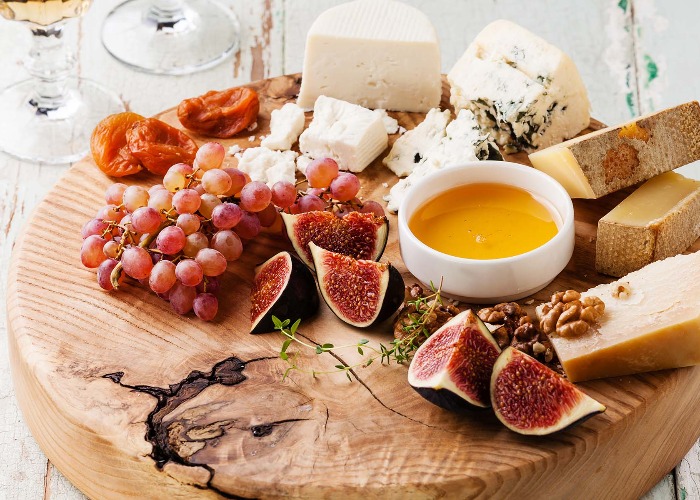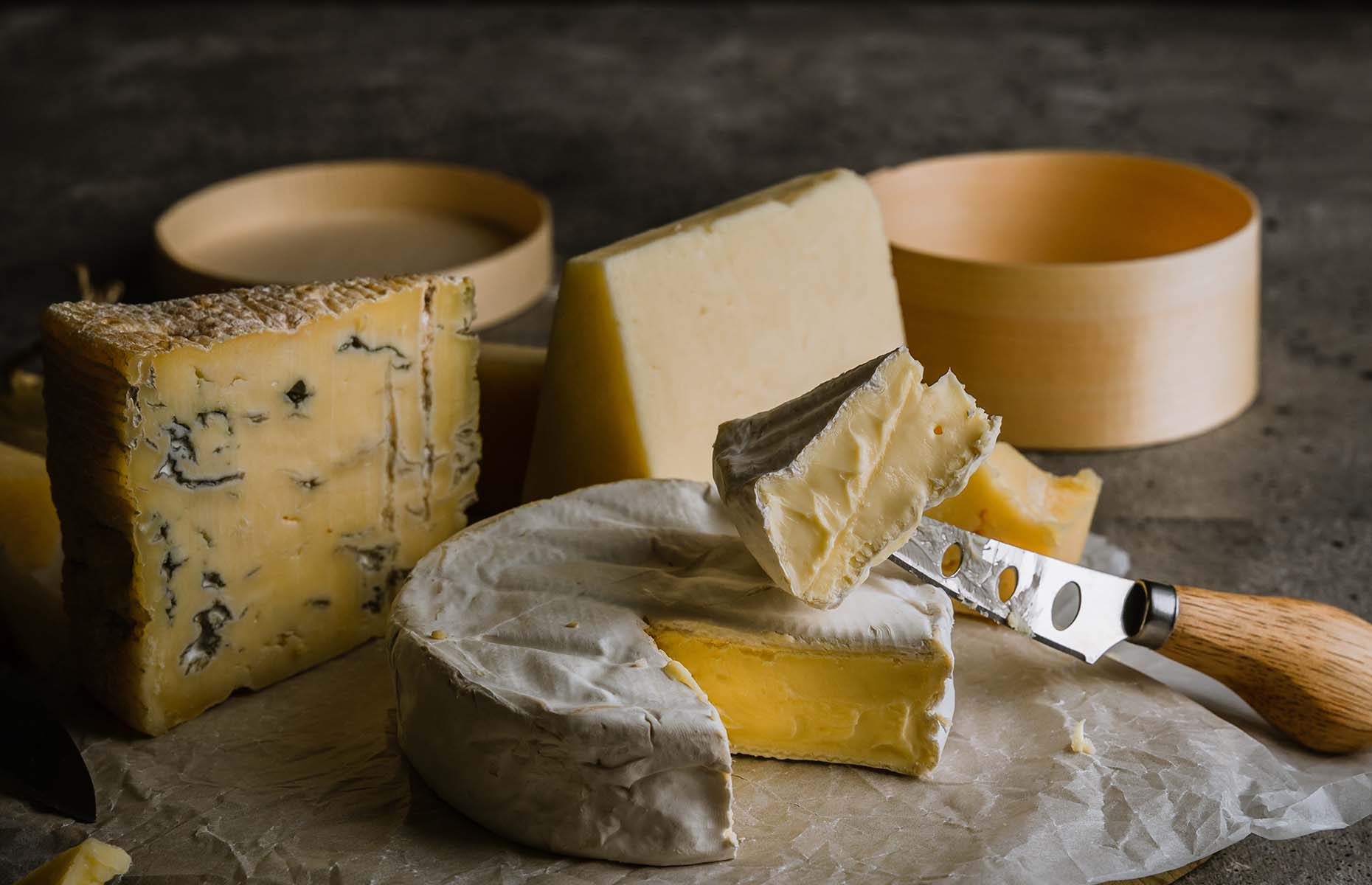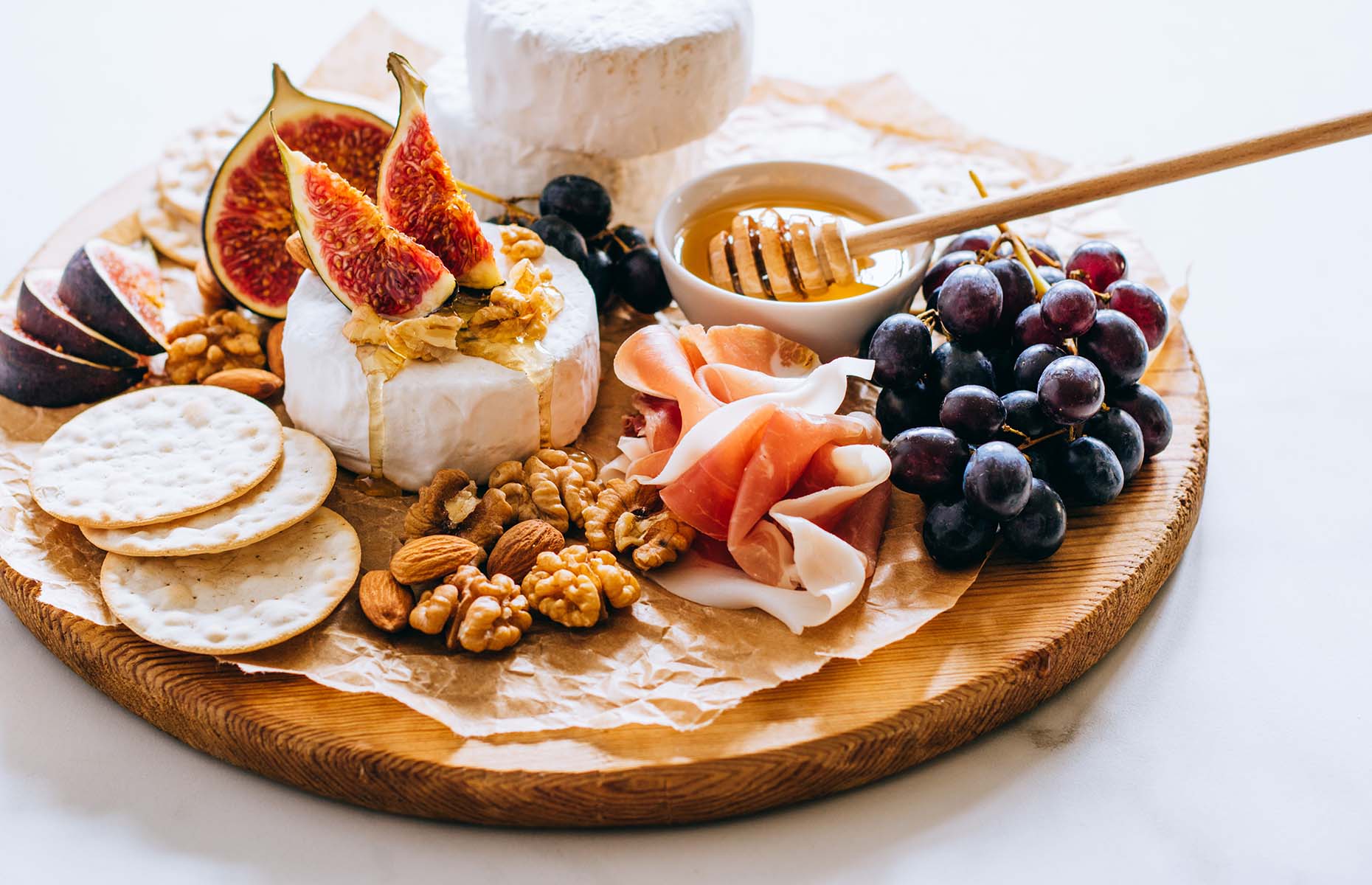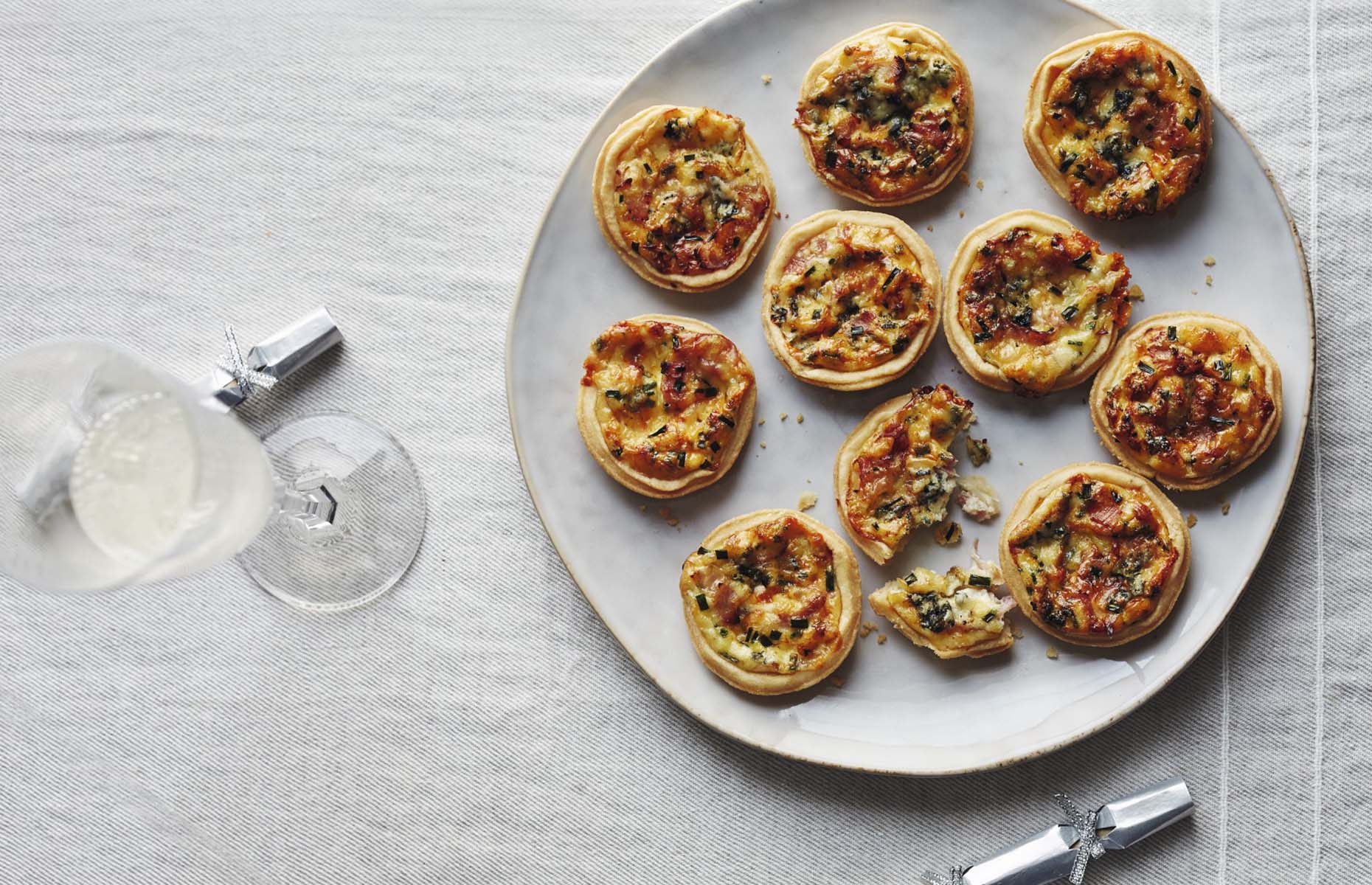How to build the perfect Christmas cheeseboard

Everything you need to know about choosing cheese this festive season.
We spoke to award-winning cheesemonger Hero Hirsh from Paxton and Whitfield to get her top tips on creating the perfect cheeseboard at Christmas.
How much cheese should you provide per person?
If you are looking to create a cheeseboard as part of a meal, Hero suggests allowing each person about 100g to 125g (3.5oz to 4.5oz) of cheese. So for six people, around 750g (26.5oz) of cheese in total is a good amount. At Christmas, more often than not the cheeseboard will sit out for longer and stretch all the way from the end of lunch to the start of dinner so Hero suggests allowing around 150g (5oz) per person.
The best cheeseboards have three or four cheeses – more than that and it can be too much for the palate to enjoy. Hero suggests buying less varieties of cheese but larger pieces as those store much better and will tide you over the Christmas period nicely.
 Albina Bugarcheva/Shutterstock
Albina Bugarcheva/Shutterstock
What cheeses should you buy?
Hero suggests creating a cheeseboard that offers different styles, textures and flavours. "This is why the combination of Cheddar, Stilton and Brie has always been popular, as you've got a blue, a hard and a soft cheese," she says.
If you go for this trio, you can also be more adventurous with the cheeses you select. For example, there are many great British artisan cheeses: instead of a brie try Tunworth and instead of a Cheddar give Westcombe a go. Full bodied, with notes of warm toasted nuts, this would be an amazing addition to your cheeseboard. And if you're a big fan of Gorgonzola, try Blue Clouds. Made on the Balcombe Estate in Sussex, it's soft and creamy with a heady, doughy scent and is also suitable for vegetarians.
To add a continental touch to your cheeseboard, you can't go wrong with the theatre of Cremoso. It's best enjoyed with the top sliced off so the delectable soft cheese can be scooped out of the rind with a cracker. For those who prefer the likes of Comté and Gruyere, Switzerland's Schnebelhorn is perfect. This cheese is made with added cream, creating an intensely rich texture with a fantastic full flavour.
It's also worth thinking about what other food you'll be serving as you want the cheese course to be a continuation of flavours. Whatever you do choose, always try the cheese before you buy it if you can and don't just go for what you had last year.
READ MORE: A complete guide to Comté
How should you put the board together?
When setting out your cheeseboard, make sure you leave space to actually cut the cheese. Give the hard cheeses space to breathe and softer cheeses room to spread out, however, there are no hard and fast rules about laying a cheeseboard out. "The most important thing is to make sure that it looks visually appealing and it is easy for guests to help themselves to the cheese," Hero says.
Shape and colour can also be considered. For instance, the orange hue of a Shropshire blue might create a pleasing contrast compared to the paleness of a white Stilton, but there are no real rules about which cheeses can and can't sit close to each other – just make sure it looks appetising and inviting.
Sliced apples are a great palate cleanser in between cheeses, while grapes have long been a favourite. Hero suggests keeping it relatively simple to let the cheeses shine – one chutney or honey and one style of biscuit, cracker or bread will do nicely. Arrange them around the pieces of cheese to create an effect of a plentiful board.
READ MORE: Homemade foodie Christmas gift ideas
 Malinka Galina/Shutterstock
Malinka Galina/Shutterstock
What should you drink with your cheese?
Port and cheese is a classic Christmas pairing, but remember that different styles of port work well with different cheeses.
LBV, which stands for Late Bottled Vintage, is the quintessential Christmas choice. It doesn't need to be decanted and can last for a week or so after it's uncorked (although the quality will deteriorate).
If you choose a vintage port, decant it and let it rest for a few hours so the sediment can settle. With dark violet and plum aromas, this can easily stand up to a strong cheese such as a beautifully creamy Cornish blue. A tawny port offers spicier and nutty aromas, perfect with a tangy and buttery Cheddar.
Lastly, don't overlook fortified wines: Madeira or a sweet Oloroso sherry can both work well with cheese.
READ MORE: Everything you need to know about sherry
Where should you buy your cheese?
If you are looking for exceptional artisan cheeses and great advice, it's always worth going to a good cheesemonger. The cheeses will be in good condition, you'll be able to talk through what you are looking for, and you'll be able to try some of the cheeses before buying them too.
How should you store your cheese?
How you treat your cheese post-purchase has a serious impact on its flavour. Once bought, Hero always recommends storing the cheese in a cold room or at the bottom of the fridge wrapped in waxed paper, if possible, as this allows the cheese to breathe.
The last thing you want to do, however, is to serve your cheese straight from the fridge. Bring the cheeses out before serving (20 minutes should be plenty) and let them come to room temperature to allow their characteristics to wake up, their complex flavours to unfold and their aromas to strengthen.
 Waitrose & Partners
Waitrose & Partners
What should I do with any leftover cheese?
Cheese is incredibly versatile so any leftovers you might still have lingering after Christmas can become a superb cooking ingredient. You can add cheese to soups and risottos for extra richness, in pasta bakes and as a finishing touch, stirred into sauce. We love this Christmas mac 'n' cheese that incorporates all of the cheeseboard leftovers or these festive tartlets that put Stilton centre stage.
READ MORE: Comforting cheese recipes everyone will love
Lead image: Natalia Lisovskaya/Shutterstock
Comments
Be the first to comment
Do you want to comment on this article? You need to be signed in for this feature